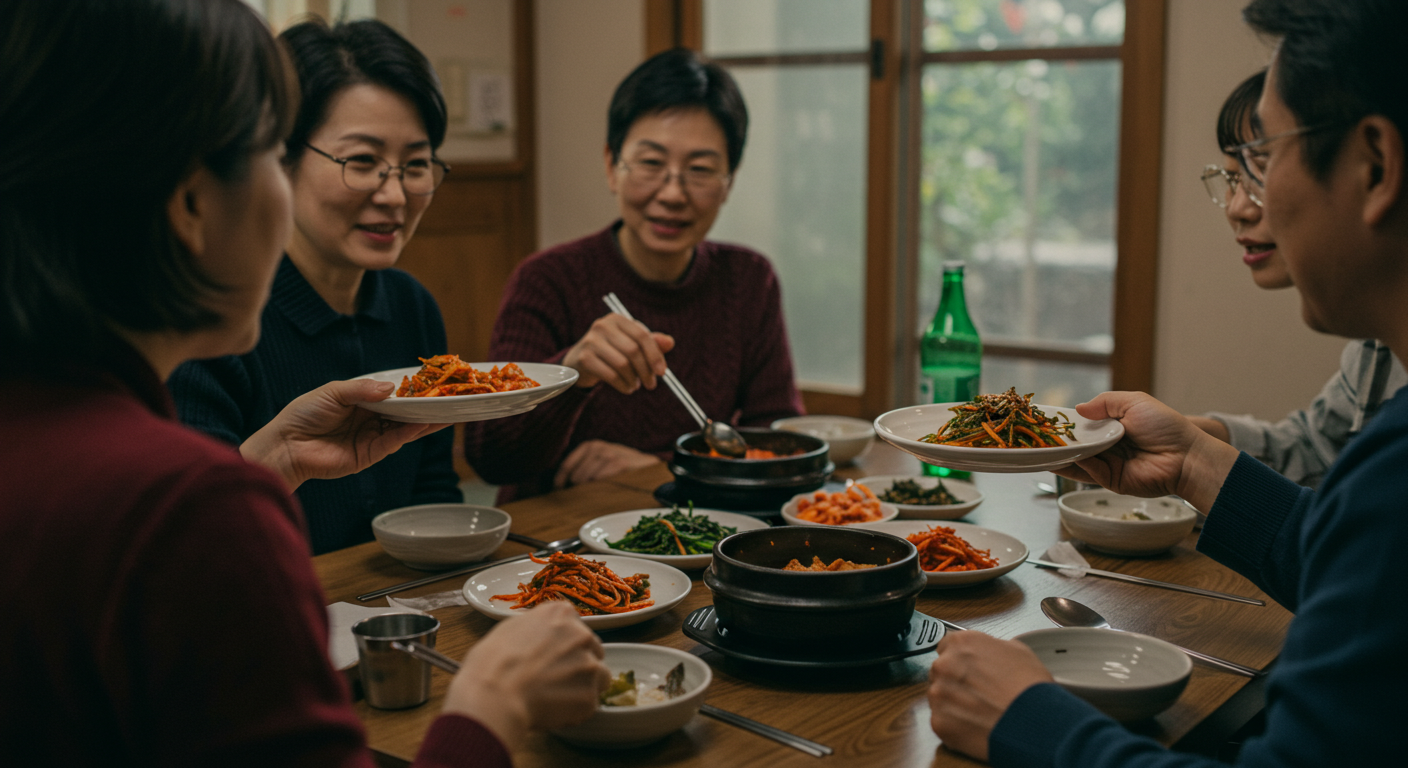Introduction – A Curious Question
“Why do Koreans always say ‘Let’s eat together’?” – First Impressions of Korean Dining Culture
A friend new to Korea once asked, “Why do people here always invite you to eat together? Is it really that important?” At first, it seemed like a polite phrase—but soon, he discovered the heart of Korean dining culture hidden in those simple words.
First Encounter – A Culture Shock
“Can’t I eat alone?” – The Unspoken Promise Behind “Let’s Eat Together”
When he tried to eat alone, a Korean friend immediately said, “Why alone? Let’s go together!” He was taken aback—was solo dining odd here? Repeated phrases like “Have you eaten?” and “Let’s eat together” weren’t just casual greetings. They were subtle invitations into community.
Observation and Adaptation – Trying It Myself
A Meal that Bridges Distance – Experiencing Korean Dining Culture
Eventually, he found himself saying, “Want to eat together?” first. As he shared meals, the atmosphere grew warmer. Even without much conversation, that shared time shrank emotional distance. In Korea, one simple lunch could change a relationship.
A Silent Expression of Care – What “Let’s Eat Together” Reveals about the Korean Sense of Jeong
One day, my friend was lying in bed, sick and alone. He hadn’t eaten all day. But by evening, someone quietly left a warm meal at his door—rice, soup, and a few side dishes. There was no note, no explanation. But in that moment, he felt deeply moved. Without a single word, the gesture clearly said: “Let’s eat together.”
At that quiet doorstep, he felt the true depth of the Korean sense of jeong—a type of emotional warmth and unspoken care that Koreans often express through actions rather than words. In Korea, meals aren’t just about food; they’re about connection.
Later, he realized that when someone says “let’s eat together,” it’s not simply an invitation to share a meal. It means, “You are not alone.” It’s a subtle way to reach out, to offer comfort, and to say, “You matter.”
Over time, he began to understand that shared meals in Korean dining culture are emotional bridges. Eating together becomes a time to share stories, offer quiet support, or just feel each other’s presence without speaking. It’s nourishment not just for the body, but for the heart.
What touched him the most was how naturally this happened. No one taught it directly—people just lived it. Through this simple yet powerful habit, he absorbed the Korean sense of jeong, and without realizing it, he too began to share meals not just with his hands, but with his heart.
Conclusion – A Changed Mind and Longing Heart
The Warmth of Eating Together – Why I Miss That Phrase
Now living abroad, he finds himself longing for someone to say, “Let’s eat together.”
In Korean dining culture, that phrase means much more than a meal—it’s a bridge between people, a quiet form of care, and one of the things he misses most about Korea.
Enjoyed this read? Check out these stories too-Korean School Cleaning Culture – Why Students Sweep Their Own Classrooms
